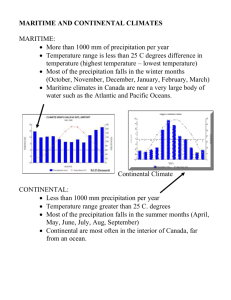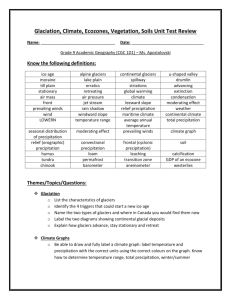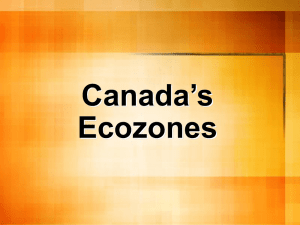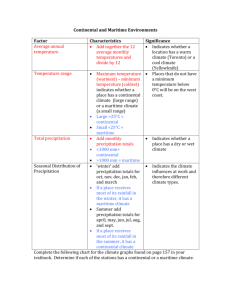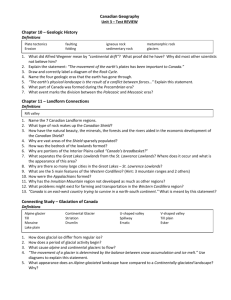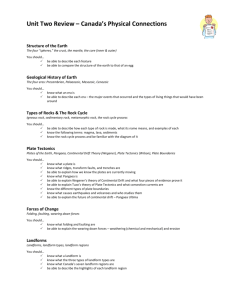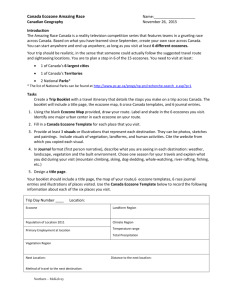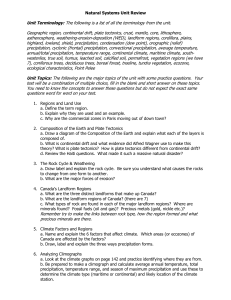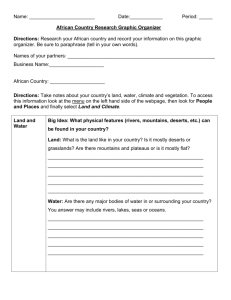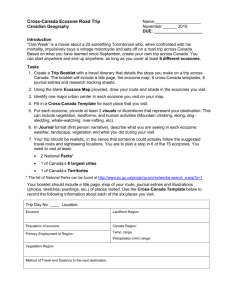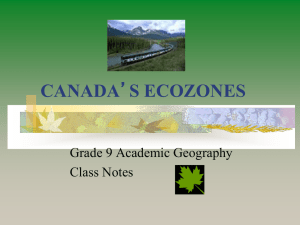glaciation etc review
advertisement
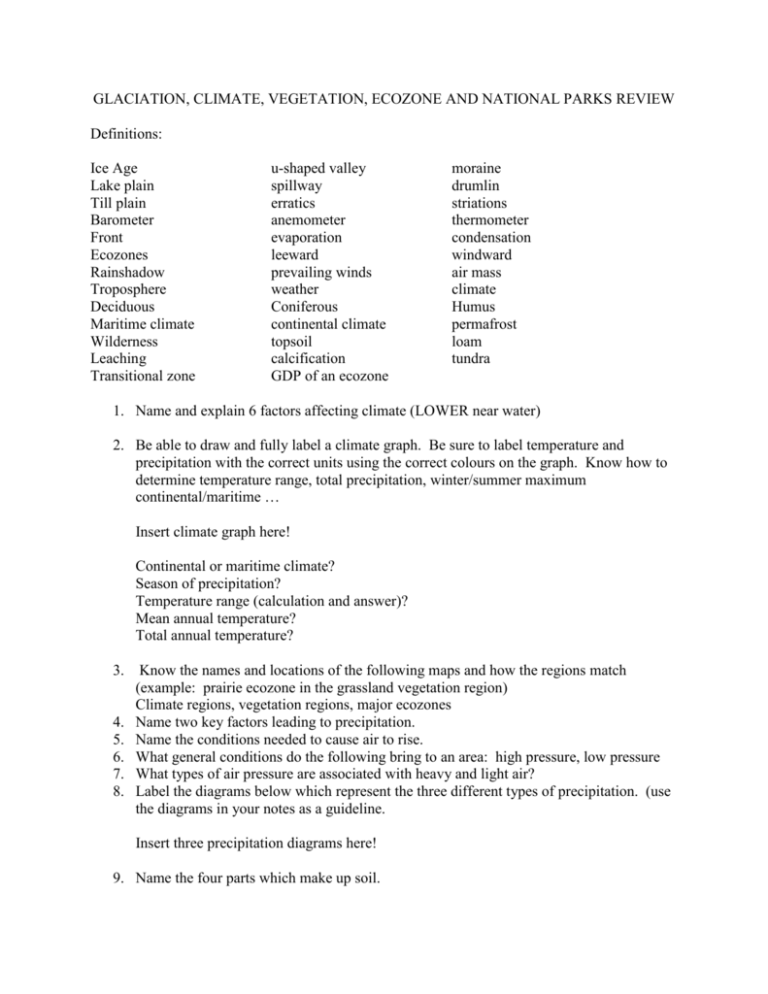
GLACIATION, CLIMATE, VEGETATION, ECOZONE AND NATIONAL PARKS REVIEW Definitions: Ice Age Lake plain Till plain Barometer Front Ecozones Rainshadow Troposphere Deciduous Maritime climate Wilderness Leaching Transitional zone u-shaped valley spillway erratics anemometer evaporation leeward prevailing winds weather Coniferous continental climate topsoil calcification GDP of an ecozone moraine drumlin striations thermometer condensation windward air mass climate Humus permafrost loam tundra 1. Name and explain 6 factors affecting climate (LOWER near water) 2. Be able to draw and fully label a climate graph. Be sure to label temperature and precipitation with the correct units using the correct colours on the graph. Know how to determine temperature range, total precipitation, winter/summer maximum continental/maritime … Insert climate graph here! Continental or maritime climate? Season of precipitation? Temperature range (calculation and answer)? Mean annual temperature? Total annual temperature? 3. Know the names and locations of the following maps and how the regions match (example: prairie ecozone in the grassland vegetation region) Climate regions, vegetation regions, major ecozones 4. Name two key factors leading to precipitation. 5. Name the conditions needed to cause air to rise. 6. What general conditions do the following bring to an area: high pressure, low pressure 7. What types of air pressure are associated with heavy and light air? 8. Label the diagrams below which represent the three different types of precipitation. (use the diagrams in your notes as a guideline. Insert three precipitation diagrams here! 9. Name the four parts which make up soil. 10. Know the difference between a leached and calcified soil profile. 11. What happens to vegetation as precipitation changes? 12. What happens to vegetation as temperatures change? 13. Sketch and label a typical soil profile. 14. Name the top five ecozones according to the percent of GDP. Know where these ecozones are located in Canada and the names of the matching climate and vegetation regions. 15. Know some of things that National and Provincial Parks do. 16. Why are natural areas set aside according to the National Parks Act. 17. Name the three groups which are working to complete Canada’s network of protected lands. 18. What is the name of Canada’s first official National Park? 19. What types of areas is the term wilderness used to describe? 20. List some reasons why wilderness is important to humans and wildlife. 21. What is the Green Plan designed to do? 22. List three human activities that have caused extinction. 23. List the three major goals of conservation. 24. Explain how glaciers advance, stay stationary and retreat. 25. List the characteristics of glaciers. 26. Identify some triggers that could start a new ice age. 27. Name the two types of glaciers and where in Canada you would find them now. 28. Label the two diagrams showing continental glacial deposits. Insert two continental glacial deposits diagrams here.

